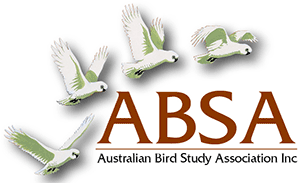Corella foraging ecology: are preadaptation, phenotypic plasticity and interspecific interference competition important in synurbanization?
| Posted: |
03/08/2020 |
| Author(s): |
Alan Lill, Elizabeth Polley |
Many birds cannot colonize cities, but for those that can having the phenotypic plasticity to adjust to urban conditions and/or being preadapted for them is critical. Other factors potentially facilitating avian synurbanization are the capacities to dominate aggressive resource competition with established species and exploit the specific advantages of urban flocking. We investigated the foraging ecology of Little
Cacatua sanguinea and Long-billed Corellas
C. tenuirostris in Melbourne in the non-breeding season to elucidate the roles of the above-named factors in their recent synurbanization. Little Corellas mainly gleaned tree seeds and grass seeds/roots; Long-billed Corellas principally dug for corms, but also ate some grass seeds/roots. Little Corellas foraged in flocks of 40+ for 60% of the time, whilst Long-billed Corellas foraged in comparably large flocks far less often. The literature indicates that in the non-breeding season nonurban Little Corellas consume fewer tree seeds, but more cereal grain, supplementary anthropogenic food and herbaceous plant components than Melbourne conspecifics, and attain larger maximum foraging flock sizes. Nonurban Long-billed Corellas, like Melbourne conspecifics, predominantly consume corms, but also eat crop seeds and more supplementary food, and forage in larger flocks. Both corellas seem to be substantially preadapted for urban foraging. Phenotypic plasticity apparently has a limited role in shaping corellas’ urban foraging in the non-breeding season; the limited consumption of supplementary food did not involve innovation. Urban corellas were sufficiently gregarious to potentially exploit the known anti-predation and resource acquisition advantages of urban flocking. Heterospecific birds were close to foraging corellas on 26% (Little Corella) and 92% (Long-billed Corella) of occasions, but £ 50% of the species involved were potential food competitors with corellas. Interspecific aggression involving corellas occurred during <20% of these proximity events and caused short-lived displacement of corellas infrequently. Interspecific interference competition for food probably plays only a minor role in the non-breeding season in the corellas’ persistence in urban Melbourne.
>> Download Abstract |
File Size: 121KB
>> Download Complete PDF | File Size: 1.62MB
